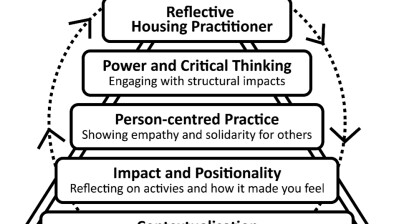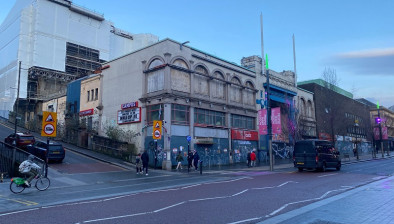Blog: Meeting affordable housing need through modern methods of construction
Scape Group chief executive, Mark Robinson, on the Scottish Government’s fresh investment into affordable housing and the barriers needed to overcome for delivery.

Mark Robinson
Demand for affordable housing in Scotland dramatically outstrips supply. While the Scottish Government aims to deliver 50,000 affordable homes, including 35,000 for social rent, by 2021 at the current rate of delivery it will take 30 years for every household on the housing waiting list to be given a home. In 2017-18, local authorities in Scotland completed just 1,499 homes, approximately 47 homes per local authority and 200 less than were sold during the same time period. Registered Social Landlords (RSLs), who have taken the bulk of responsibility for the delivery of homes for social rent have delivered an average of 3,850 homes a year since the early 2000s.
Latest figures show that local authorities in Scotland have over 130,000 households waiting for a social rented home. To deliver at the scale required to meet housing need, we need to return to the peak of public sector housebuilding seen in Scotland during the early 1950s and 1960s when local authorities held responsibility for delivery. While it is important to acknowledge that RSLs hold a wider role in society, undertaking huge regeneration projects and providing emotional support for tenants, the cost of RSL delivered homes are significantly more than homes being built in the private sector. The average cost per unit for an RSL to build a new home is £130,000, yet according to the Home Builders Federation homes in the private sector are being built in England and Wales for two-thirds of the cost at, £90,000. Considering the increased land and labour costs found in England there must be a more cost-effective way of delivering social rented homes in Scotland.
We recently surveyed council officers at 80% of local authorities in Scotland and the majority (67%) agreed they would prefer councils to hold sole responsibility for building homes for social rent. The 2019/20 Scottish budget includes more than £825m to help develop more affordable housing, part of a wider £3bn to deliver 50,000 affordable homes over the course of the parliament. While this drive to deliver affordable housing is admirable both the Scottish public and council officers see some fundamental barriers to delivery. The main one is a lack of available labour, three in every five council officers surveyed said the skills shortage was one of the main barriers preventing them from building more housing in their area. It is likely that this problem is only going to be exacerbated in the years to come as the UK loses access to a critical pool of labour from the European Union (EU). Scotland’s construction industry draws from a pool of citizens from the ‘EU8’ (Estonia, Hungary, Latvia, Lithuania, Poland, Slovakia, Slovenia and Czechia). In recent years there has been around 5,000 EU citizens working in Scotland’s construction sector, delivering vital infrastructure projects and contributing to the local economy.
We are currently no closer to striking a deal with the EU that will set out the terms the UK leave under in March 2019. But red lines are being drawn on our access to European labour, the immigration white paper due to publish imminently, is referencing an 80% reduction in EU immigration. Set against this backdrop of tighter immigration laws there is still a need to deliver new homes at scale. An immediate solution is the increased use of Modern Methods of Construction (MMC). Using MMC, it is possible to build up to four times as many homes with the same onsite labour required for one traditional build, circumventing the skills shortage.
MMC include, but are not limited to, panellised units produced in factories and assembled onsite, volumetric construction to produce modular units in factories prior to transport, floor or roof cassettes, pre-cast concrete foundation assemblies and pre-formed wiring looms. These have the potential to provide more building work with existing levels of onsite labour as factory-based production does not generally draw from the same labour pool as onsite construction therefore it is not competing for the same skills.
Our research found that both council officers and the public are interested in the benefits of Modern Methods of Construction. Half of the council officers we surveyed with responsibility for housing delivery would like to minimise the amount of time spent onsite. Nine out of ten members of the public, who often experience the biggest inconvenience from construction projects, are interested in reducing the amount of time spent on site.
Yet take up of modular and offsite construction is continuing to go untapped. The number of homes the Scottish Government is seeking to deliver is admirable, but many households will still be waiting for a home for years to come unless the industry and central and local government innovate.
The full report, The Future of Social Homes for Rent in Scotland, can be downloaded from scapegroup.co.uk/research.







